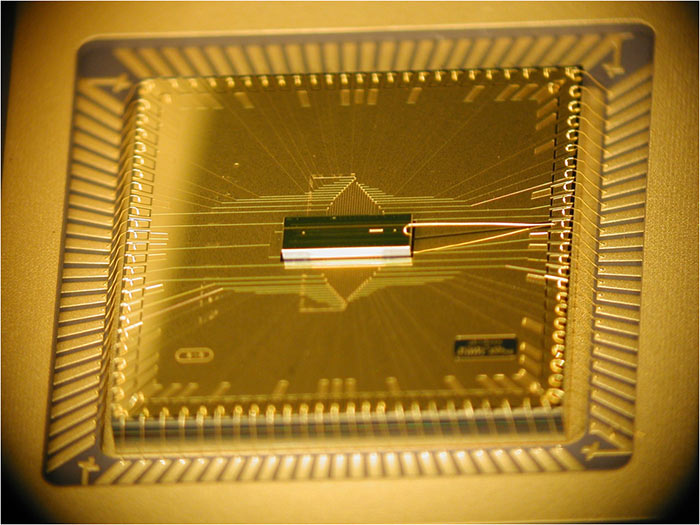Scientists commonly seem to believe that there is huge potential for the use of quantum computers in the future. Such computers have the potential to "revolutionize chemistry, biology and material science," reports Phys.org. However those trying to develop quantum computers have been hitting development barriers including an important one which concerns the electrode density of the chip. Georgia Tech Research Institute (GTRI) and Honeywell International researchers have solved the problem of electrode density by borrowing ideas from the BGA chip package design.
One of the leading design candidates for a quantum computer chip manipulates individual ions trapped in a vacuum with laser beams. The qubit density offered by this chip design is limited by the number of laser electrodes that can be fitted around the chip perimeter. GTRI and Honeywell scientists have discovered that a ball grid array (BGA) microfabrication can improve the electrode and thus qubit density of a chip. The new technique was "trapping ions from the very first day," of development. The team also improved space around the chip perimeter by using trench capacitors and moving wire connections.

More qubits means the computer can encode, store and access larger amounts of data. Phys.org says a 300 qubit system's quantum state would require 2^ 300 numbers to be described, which is approximately the same as the number of protons in the known universe. "No amount of Moore's Law scaling will ever make it possible for a classical computer to process that many numbers," said research head Nicholas Guise.
Now there are plenty of engineering challenges still left to make the BGA project miniaturised enough and robust enough to form the basis of a quantum computer. In a parallel to how transistors were combined to form computers these qubit chips need to be able to be combined so many qubits can be produced and controlled at the same time. While quantum computers are just one step closer, what has been learnt is still useful for making miniature atomic devices like sensors, magnetometers and chip-scale atomic clocks.













